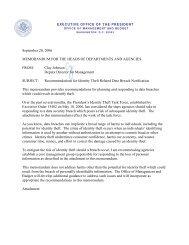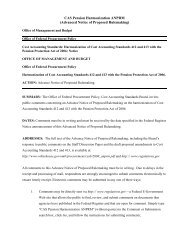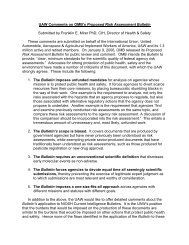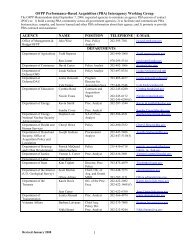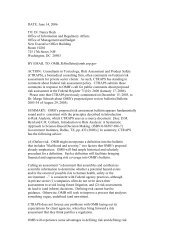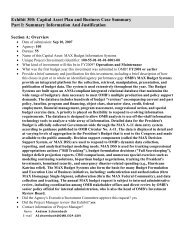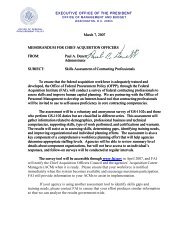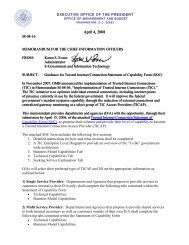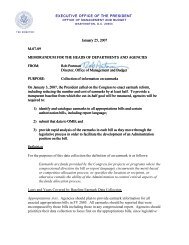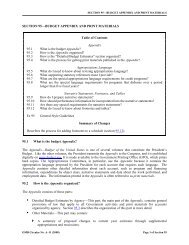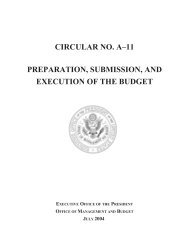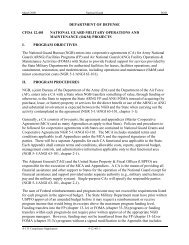+ OMB Circular A-123 (Appendix B): Improving ... - The White House
+ OMB Circular A-123 (Appendix B): Improving ... - The White House
+ OMB Circular A-123 (Appendix B): Improving ... - The White House
Create successful ePaper yourself
Turn your PDF publications into a flip-book with our unique Google optimized e-Paper software.
• A duplicate purchase;<br />
• A purchase for services not received;<br />
• A purchase for the incorrect amount;<br />
• A purchase made in the absence of available funding; and<br />
• A purchase made on the same day from the same vendor to circumvent cardholder single<br />
transaction limits.<br />
As mentioned, there are two types of improper purchases: unauthorized and incorrect.<br />
• Unauthorized purchases consist of items that are intentionally purchased and are outside of<br />
the cardholder’s purchasing authority. For instance, using a government charge card to<br />
purchase a tennis racket is an unauthorized purchase.<br />
• Incorrect purchases are mistakes that are the result of an unintentional error during the<br />
purchase process. For example, when a purchase cardholder is asked to buy one filing<br />
cabinet but purchases three cabinets, this is an incorrect purchase. A series of seemingly<br />
incorrect purchases may require investigation to determine whether these purchases are<br />
actually unauthorized purchases.<br />
Fraudulent purchases include those made by cardholders that were unauthorized and intended for<br />
personal use, purchases made using government charge cards or account numbers that had been<br />
stolen or compromised, and purchases correctly charged to the charge card but that involve<br />
potentially fraudulent activity that went undetected.<br />
4.8 What documentation should be maintained to minimize erroneous and improper<br />
purchases?<br />
To the maximum extent possible, agency personnel requesting a cardholder to acquire an item(s)<br />
with a purchase card should provide written requests to the purchase cardholder for the items. If<br />
it is not possible for the requester to make the request in writing, the purchase cardholder should<br />
document in their file the requester’s name, item description, quantity, estimated cost, and date<br />
of request. <strong>The</strong> purchase cardholder should also document availability of funds at the time of<br />
each purchase and obtain prior approval before making self-generated purchases.<br />
Travel and fleet cardholders should continuously monitor the billing statements associated with<br />
each charge card to minimize improper and/or erroneous purchases.<br />
4.8 What specific risk management controls, policies, and practices are required for<br />
addressing charge card misuse?<br />
Charge card managers are responsible for ensuring that charge cards are used for authorized<br />
purchases or expenses only.<br />
In carrying out these activities, charge card managers are required to:<br />
<strong>Appendix</strong> B<br />
<strong>OMB</strong> <strong>Circular</strong> A-<strong>123</strong><br />
(Revised January 2009)




